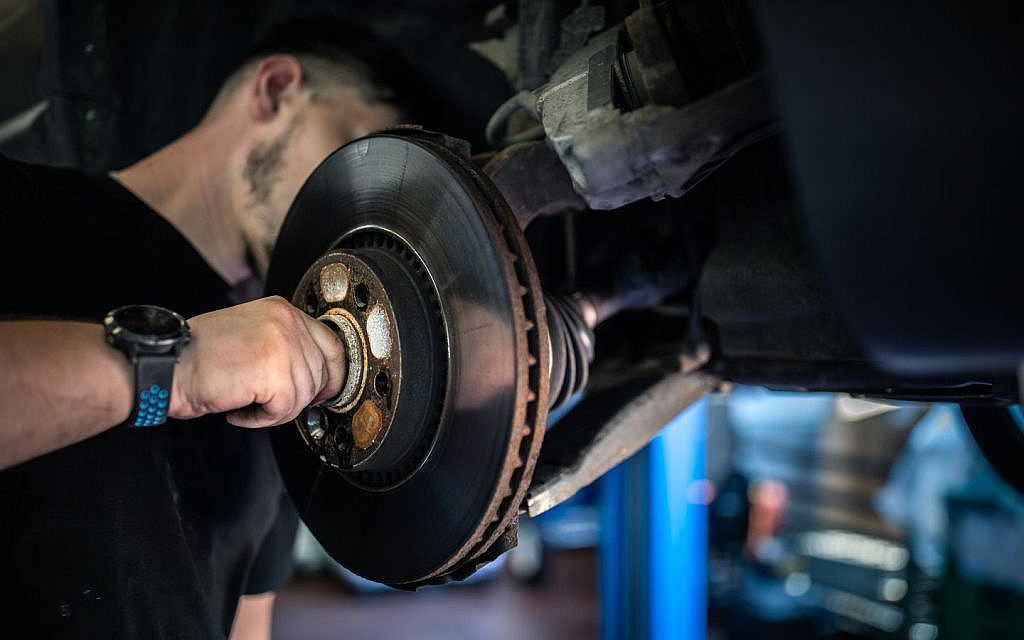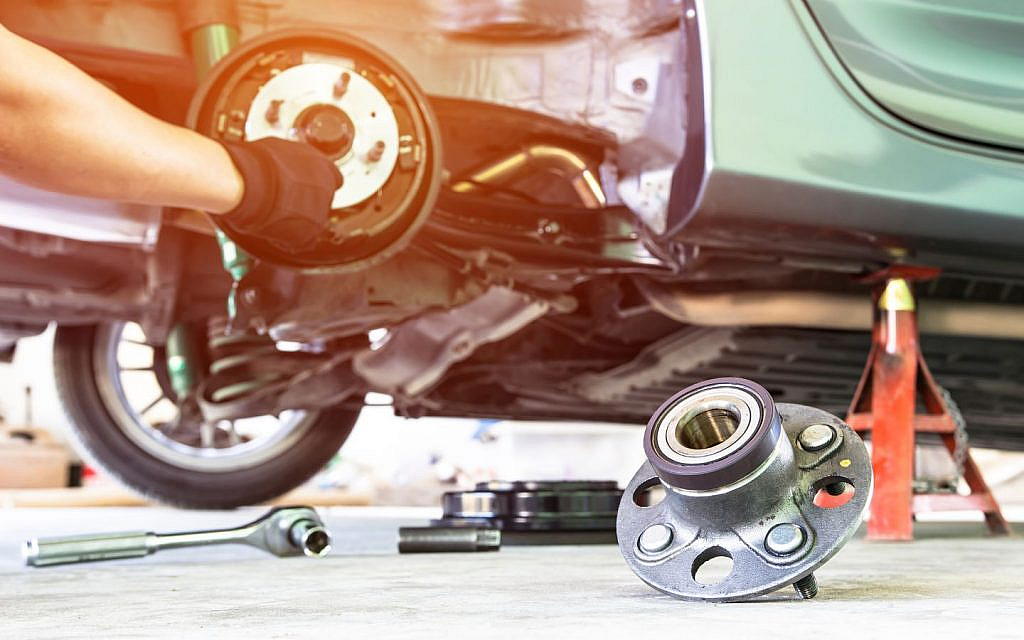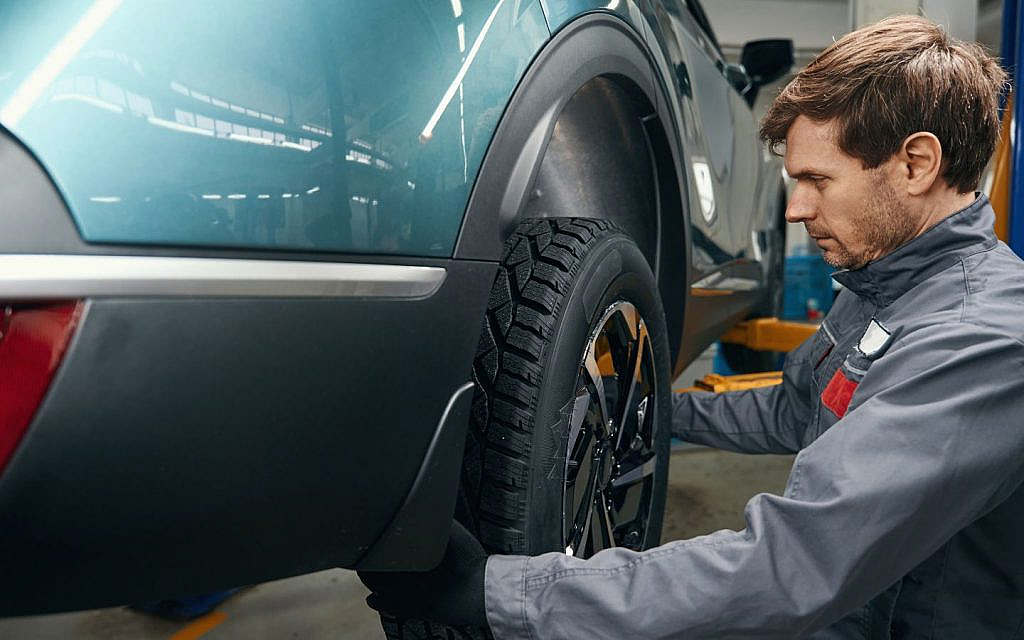Wheel Bearing Noise Vs Tyre Noise: How to Identify
Any type of unusual noise coming from your vehicle can be unsettling and concerning while driving. Common culprits behind such noises are either worn-out wheel bearings or different types of tyre issues. Both can sound similar, making it tricky to pinpoint the cause. However, identifying the source early can save you from costly repairs and ensure your safety on the road. Here, we’ll help you distinguish between wheel bearing noise vs tyre noise to diagnose the problem accurately.
Difference Between Wheel Bearing Noise and Tyre Noise
A wheel bearing noise or tyre noise can be more than just an annoyance. It can cause significant inconveniences and pose safety risks to drivers. Persistent humming, grinding or roaring sounds can be distracting, making it harder to focus on the road.
More importantly, ignoring these noises could indicate underlying mechanical issues that could be related to one of the symptoms of bad wheel bearing. Tyre-related noises could signal uneven tread wear, poor alignment, or tyre damage, which can affect handling and reduce fuel efficiency.
Identifying the root cause early prevents further damage to your vehicle. It also ensures a safer driving experience and saves on costly repairs down the line. Here is a simplified comparison between wheel bearing noise and tyre noise.

What Is Wheel Bearing Noise?
Wheel bearings are crucial components that allow the car wheels to rotate smoothly. They support the weight of the vehicle and reduce friction as the wheels turn. Over time, these bearings can wear out due to age, poor lubrication or exposure to water and dirt.
When this happens, you’ll likely hear a distinctive noise. To clarify the difference between wheel bearing noise vs tyre noise, here are some key characteristics to consider.
Characteristics of Wheel Bearing Noise
- Whining or Humming Sound: It often resembles a droning, humming, or growling noise that changes with speed. It also gets louder as the car accelerates.
- Rhythmic or Cyclical Noise: The sound is often rhythmic and related to wheel rotation. It may get louder or quieter depending on whether you’re turning left or right.
- Consistent Regardless of Road Surface: Unlike tyre noise, bad wheel bearing noise remains constant on all road surfaces, including smooth highways.
Signs That Indicate Bad Wheel Bearings:
- Noise gets louder: If the noise gets louder when turning in one direction and quieter when turning the other way, a wheel bearing on one side may be failing.
- Vibration in the steering wheel: In severe cases, worn-out bearings may cause vibrations that you can feel in the steering wheel.
- Uneven tyre wear: Damaged wheel bearings can also lead to uneven tyre wear, though this is more of a secondary effect.

What Is Tyre Noise?
In the wheel bearing noise vs tyre noise comparison, the latter is usually a result of the type of tyre tread wear or improper inflation. Tyres with aggressive treads, like off-road or winter tyres, tend to be noisier. Additionally, worn or misaligned tyres can create an annoying sound, especially at high speeds.
Characteristics of Tyre Noise
- Varying noise intensity: The noise will vary depending on the type of road surface you’re driving on. It’s often louder on rough or textured roads and quieter on smooth pavement.
- Roaring or Whirring Sound: Tyre noise generates more of a steady roar or a humming car noise that changes with road texture rather than speed.
- Increases with Speed but Consistent in Tone: Tyre noise may increase in volume with speed, but it doesn’t change its tone or rhythm significantly like wheel bearing noise.
Signs That Indicate Tyre Issues
- Uneven tread wear: One of the most common tyre noise causes is worn treads. They may produce a whirring or roaring noise.
- Out-of-balance tyres: This car tyre problem causes a thumping sound and may be felt through the steering wheel.
- Improper tyre inflation: Underinflated or overinflated tyres can also cause unusual noises and lead to uneven wear.

How to Diagnose the Noise Source
Now that we know the distinctions between wheel bearing noise vs tyre noise, here are some methods to diagnose the root cause. If you’re hearing a strange noise and aren’t sure if it’s coming from your wheel bearings or tyres, here are some diagnostic tips:
Change the Car Speed
Listen to how the noise changes as the car speeds up or slows down. Wheel bearing noise often gets louder as speed increases, while tyre noise is more consistent.
Turn the Wheel
On an empty stretch of road, gently swerve left and right. If the noise changes (gets louder or quieter) when turning, it’s likely a wheel bearing issue. If it remains constant, it’s probably tyre-related.
Check the Tyres
Inspect the tyres for signs of uneven tread wear, tyre cupping or damage. Running your hand over the tyre’s surface can reveal irregularities that might be causing noise.
Feel for Vibrations
If you feel vibrations through the steering wheel or floor of the vehicle, it may indicate a failing wheel bearing or an out-of-balance tyre. Ignoring these signs can lead to further damage and affect your vehicle’s handling and safety.
Jack Up the Vehicle
If you’re comfortable doing so, lift each wheel off the ground and spin it by hand. Use a car jack to lift the vehicle. A damaged wheel bearing may produce a rough, grinding sound or feel loose.
When to Seek Professional Help
If you’re unsure about the tyre noise vs wheel bearing noise, it’s best to get your vehicle checked by a mechanic as soon as possible. Ignoring wheel bearing issues can lead to dangerous driving conditions, as the wheel could potentially seize or come loose. Tyre noise, while less urgent, can still affect the ride quality and tyre longevity.
Preventive Tips to Avoid Wheel Bearing and Tyre Noises

Here are some helpful tips to prevent wheel bearing noise vs tyre noise.
Schedule Regular Maintenance
Conduct regular inspections of the car’s wheel bearings and tyres to catch potential issues early and ensure optimal performance. This helps improve vehicle handling on the road and prevents costly repairs.
Maintain Proper Tyre Inflation
Keep the tyres inflated to the recommended levels to prevent uneven wear and enhance safety on the road. Maintaining a correct car tyre pressure helps improve overall driving comfort.
Align and Balance Wheels
Periodically have your wheels aligned and balanced to minimise tyre noise and prevent premature wear. Regular car wheel alignment can also improve steering control and extend the life of a suspension system.
Rotate Tyres Consistently
Regular car tyre rotation helps them wear evenly, reducing road noise and extending their lifespan. This practice ensures better traction and stability, especially in varying weather conditions.
FAQs
What can be mistaken for wheel bearing noise?
Wheel bearing noise can often be mistaken for tyre issues, such as uneven tread wear or problems with the suspension components.
Is it OK to drive with a noisy wheel bearing?
No, it’s not safe to drive with a noisy wheel bearing. It can lead to wheel failure, compromised steering control and increased risk of accidents.
What is one of the first signs of bearing failure?
One of the first signs of bearing failure is a noticeable noise, such as a grinding or humming sound. It is one of the signs your car needs new wheel bearings.
With that, we wrap up our comparison of wheel bearing noise vs tyre noise. Be it any cause, such car noises should never be ignored and you must get them diagnosed at the earliest. However, if you are car has these issues every now and then, it’s better to upgrade to a new one. For that, consider these new cars for sale in the UAE, offering a wide choice spectrum under different price points.
For more on different car problems and how to diagnose them, keep reading dubizzle’s autos blog.
Comments
Post a Comment